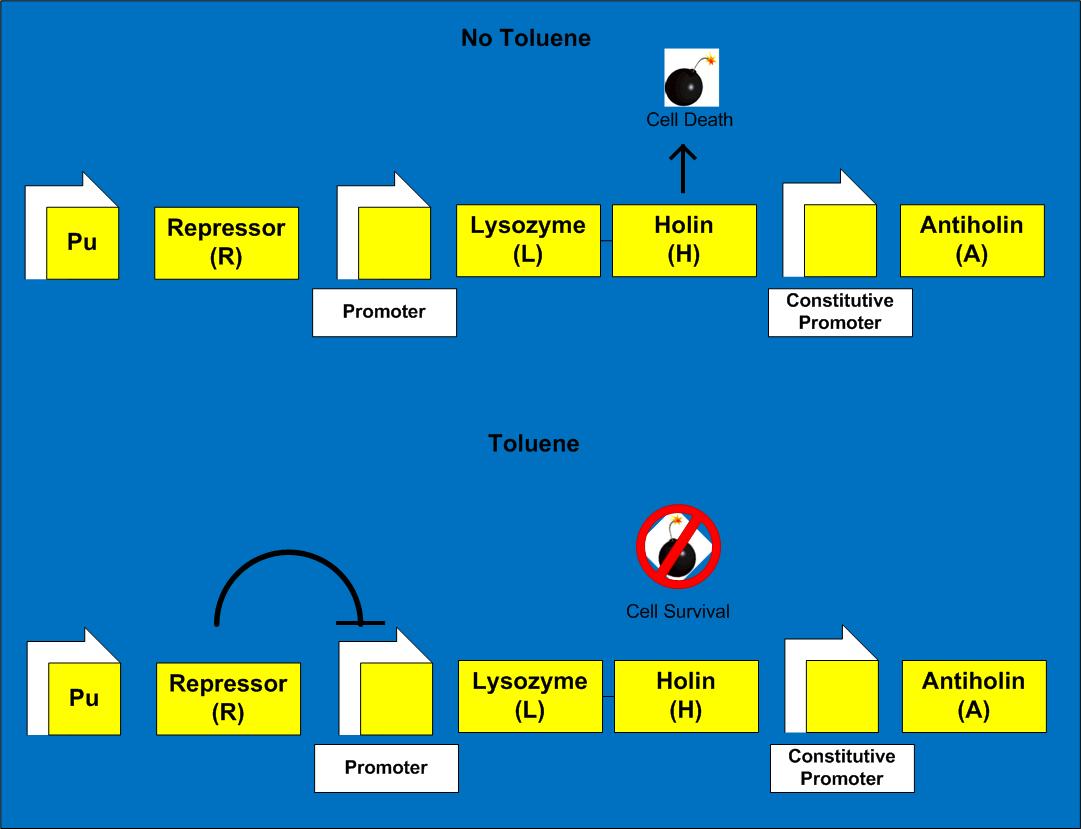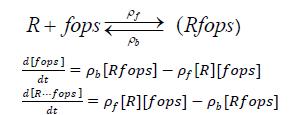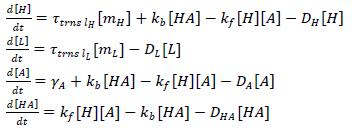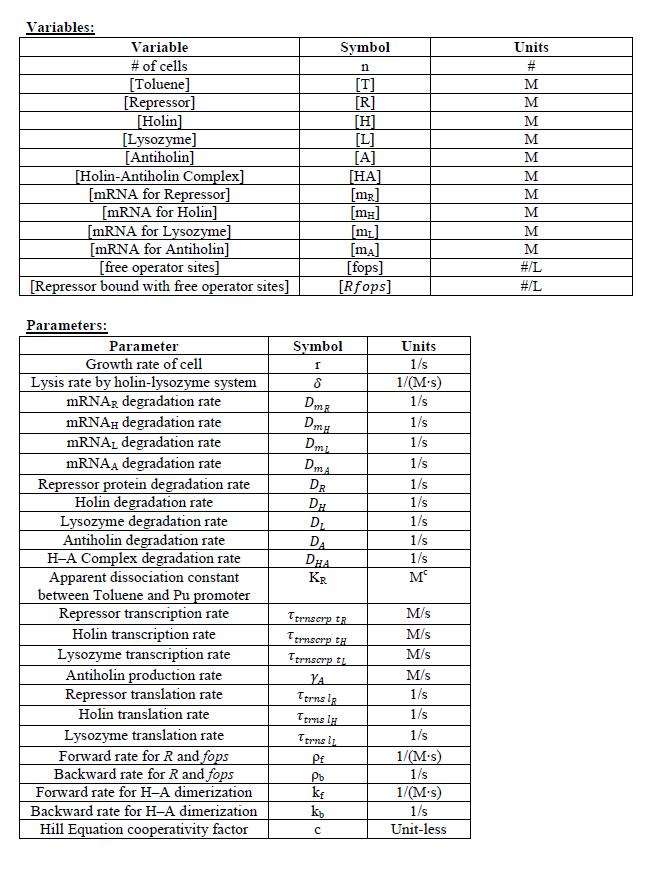Team:Michigan/Modeling
From 2009.igem.org
| ||||||||||||||||||||||
|---|---|---|---|---|---|---|---|---|---|---|---|---|---|---|---|---|---|---|---|---|---|---|
|
The Toluene Terminator ModelOverview :The following mathematical model examines the dynamics of the Suicide Mechanism with Tunable Repression (see Project Page). As outlined in the project description, the Pu promoter is placed in front of a repressor system that would inhibit the production of holin and lysozyme, while a constitutive promoter is placed in front of the gene for antiholin. In the presence of toluene, the Pu promoter would be activated, leading to repression of holin/lysozyme production and therefore cell survival. In the absence of toluene, the Pu promoter would not be activated, and as a result holin and lysozyme would be produced, leading to cell death.
Cell Growth/Death
Transcription of Repressor :f([T]) is a function of toluene concentration
Transcription of Lysozyme and Holin:
Repression of Lysozyme and Holin Transcription
Assuming that fops and Rfops do not undergo spontaneous degradation. Production of Repressor
Production of Proteins
--and using the translation rates and incorporating dimerization using the law of mass action: Assumptions
Variables and ParametersFurther WorkWe plan to run simulations of this model using MATLAB, focusing on the relationship between cell count and toluene concentration. Before this is done, we must find or estimate values for the parameters listed above. Initial simulations will be tailored to fine-tuning parameters to satisfy the primary needs of the modeling: at high toluene concentrations, the cells will survive; at low toluene concentrations, the cells will die. After that, we will look at low-to-high and high-to-low transitions in toluene concentrations and look for equilibria that arise as a result. This will help us understand how responsive the system is to toluene levels (including initial concentrations). Lastly, a future version of this model will couple the kill switch mechanism with the degradation mechanism. One of the major effects that this will have on the kill switch modeling is that toluene levels will be reduced by the degradation pathway. To understand coupling effect is one of the major goals down the road, as it will help us gain a deeper understanding of the overall dynamics of our proposed project. |
|---|
 "
"





